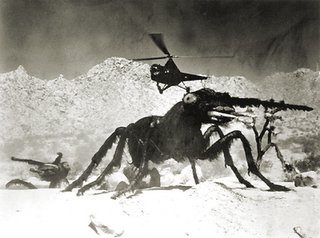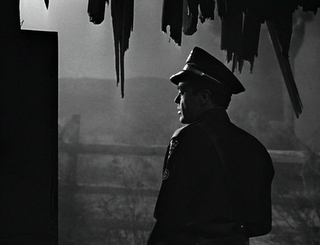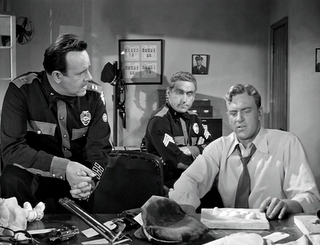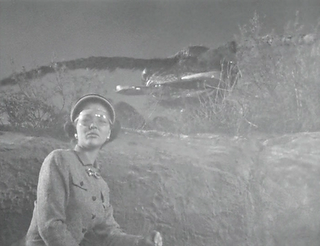A Few Moments with Mr. Wilder

One of the best examples of making sure every scene does as much work as it can is in an underrated film from Billy Wilder, written by Wilder, Charles Lederer and Wendell Myers. Spirit of St. Louis appears to be a straightforward Hollywood biography based on Charles Lindberg’s memoir of his solo flight from New York to Paris in 1927. It isn’t all that straightforward if you take the time to look at how the picture is structured. It starts in the hours before Lindberg’s take-off with a sleepless Jimmy Stewart playing the much younger pilot. Stewart thoughts, alone in a dark hotel room on Long Island, lead to flashbacks that dramatize biographical information leading up to the eventful flight. The flashbacks catch up with the “real time” of the movie close to the mid-point of the film and the second half becomes essentially a solo turn of Stewart alone in the cockpit of the tiny plane making history.
The beauty of this is that it admits the audience knows how the movie’s going to end. By starting with Lindberg on the eve of his flight the background can be sketched in through carefully selected scenes with huge chronological gaps between them. Start with barnstorming Lindberg, or Lindberg in the aircorp and you’ve committed yourself to convincingly depicted ten years, killing time till you catch up with the moment the audience came to see. It’s a much more inventive film than most people think.
But the particular moment that I want to point out comes at the half-way point, just before Lindberg is about to take-off. The expositional challenge is this: How do you explain to an audience the controls of an experimental aircraft and the important plot point of needing to keep the weight of the plane balanced by careful switching fuel tanks as the flight progresses?
You can’t, or you shouldn’t, have one of the designers tell Lindberg, “I know you’re an experienced pilot, Chuck, but let me tell you about these controls and even though you’re essentially one of the designers of this aircraft, I’m going to verbalize what you already know about maintaining trim by switching gas tanks.”
We need a surrogate. Someone as credibly ignorant as the audience. Wilder, Lederer and Myers’s solution is a pip.
The way The Spirit of St. Louis was designed, Lindberg needed a mirror in order to read the compass mounted over his head. But on the eve of the flight, with Lindberg standing in the hanger with a mechanic, they don’t have a mirror.
Stewart turns to the crowd waiting at the open hanger doors and asks, “Does anybody here have a mirror?”
A young girl steps forward and offers a small mirror from her purse. Then she asks if she can look inside the plane. Stewart says yes.
The girl sits in the cockpit and Stewart satisfies her curiosity by telling her (and us) about the controls and the need to switch the tanks.
Expositional job done.
She climbs out of the cockpit and starts back for the crowd. But Wilder isn't done. There’s value in this beyond exposition and they exploit it. Stewart asks the girl where she’s from. She tells him she’s from Boston. “You came all the way from Boston to Long Island? Why?” She smiles, “How else were you going to get the mirror?”
Then she turns and fades back into the crowd. Beautiful. The grace note of the scene, not only informs us to what this one man’s adventure meant to people, it erases any sense that she was just there for expositional convenience.
But wait, there's more.
Later, after Stewart has taken off and is headed across the sea alone, Wilder cuts to the girl on the train headed back to Boston. With Franz Waxman’s soaring music on the soundtrack she takes out her lipstick and reaches into her bag for her mirror. Then, remembering where the mirror is at that moment, she smiles and looks toward the rain streaked window.
A simple question of exposition. How do I get the information across in a credible, economical and primarily visual way. And, having found that answer, asking what else this solution can do for me.
In Them! the profession of an off-screen murder victim lets Ted Sherdeman bring the F.B.I. into the case faster. In Spirit of St. Louis the need to explain air plane controls and fuel tanks, leads to emotional resonance and a beautiful line of dialogue about bringing the mirror from Boston.

Wilder’s movies are filled with astonishing moments of expositional compression, flawless diamonds of information. There’s a moment in The Apartment (a movie that opens with expository narration indicating that sometimes there’s just no damn way around it) when Jack Lemmon’s Bud discovers Shirley Maclaine’s Fran is sleeping with Fred MacMurrey’s Mr. Shelldrake. We know Sheldrake’s been sleeping with Fran, but Bud doesn’t. He just knows Shelldrake has taken a woman to the apartment, that there was a fight and that the woman threw her compact at him, breaking the mirror, but he doesn’t know it was the woman he loves, elevator operator Fran Kubilick. Bud finds the compact with the broken mirror and returns it to Shelldrake. They have a moment of male bonding and you think the point of the scene is Shelldrake talking about how he lied to his mistress.
Only later when Fran offers Bud her mirror so he can get a look at himself in his new junior executive hat does the purpose of the compact become clear. Bud recognize the compact. We see his face reflected in the mirror, the crack running through his face. Nobody has to tell Bud anything. He instantly understands.
Here’s how that looked on the page:
Fran takes her compact out of her uniform pocket, opens it, hands it to Bud.
Here.
BUD
(examining himself in the mirror)
After all, this is a conservative firm—-I don’t want people to think I’m an entertainer—-
His voice trails off. There is something familiar about the cracked mirror of the compact—-and the fleur-de-lis pattern on the case confirms his suspicion. Fran notices the peculiar expression on his face.
What is it?
BUD
(with difficulty)
The mirror—-it’s broken.
FRAN
I know. I like it this way—-makes me look the way I feel.
The phone has started to ring. Bud doesn’t hear it. He closes the compact, hands it to Fran.
Until next time:



















